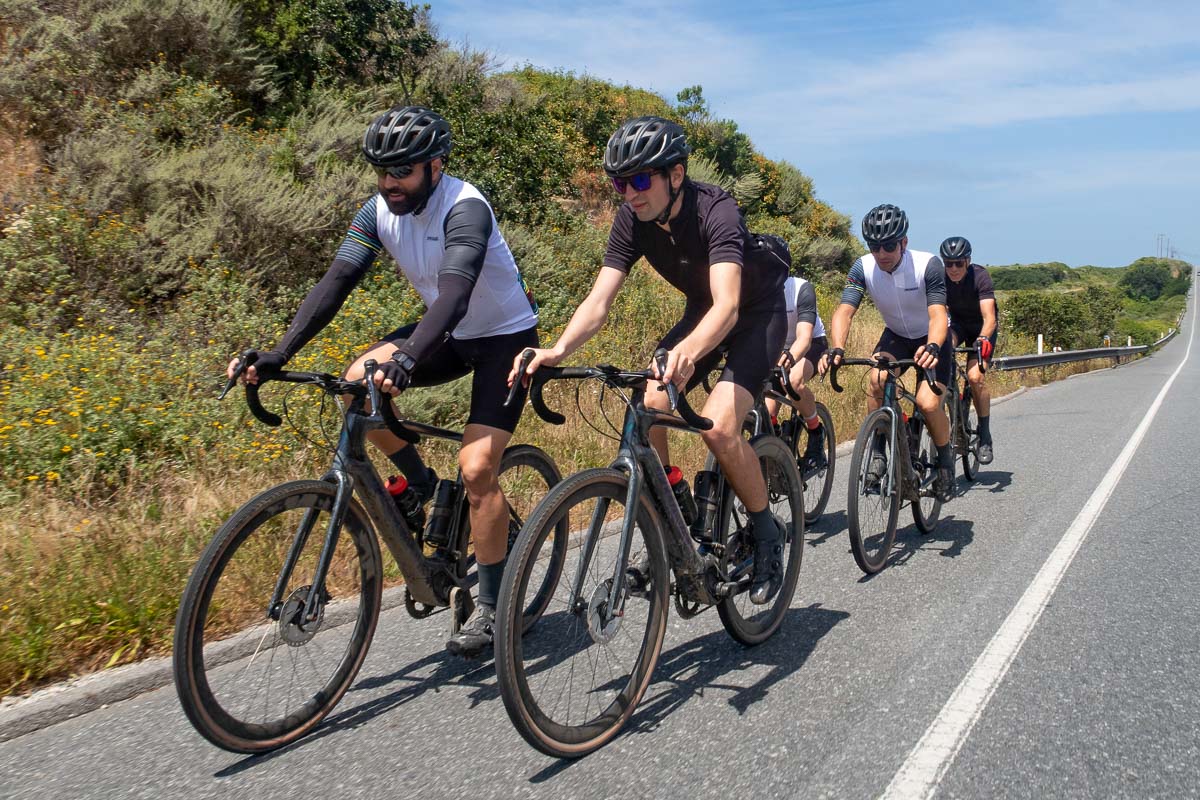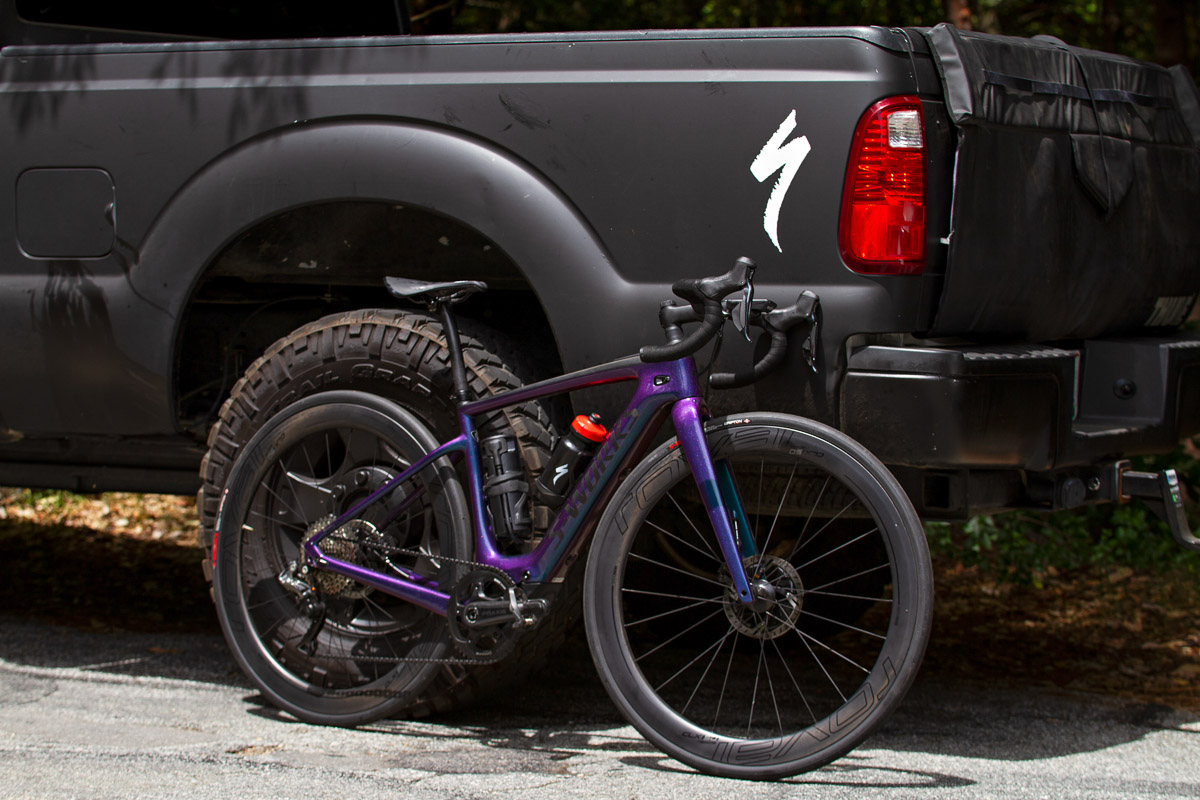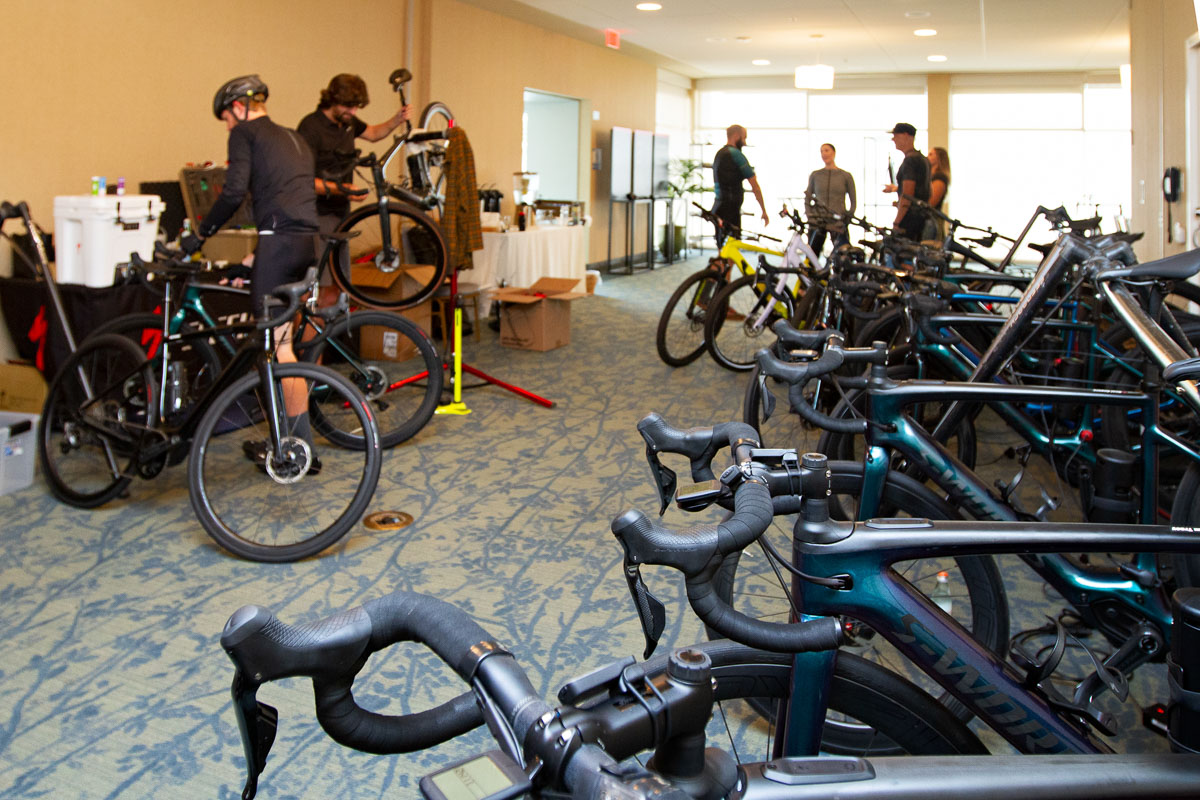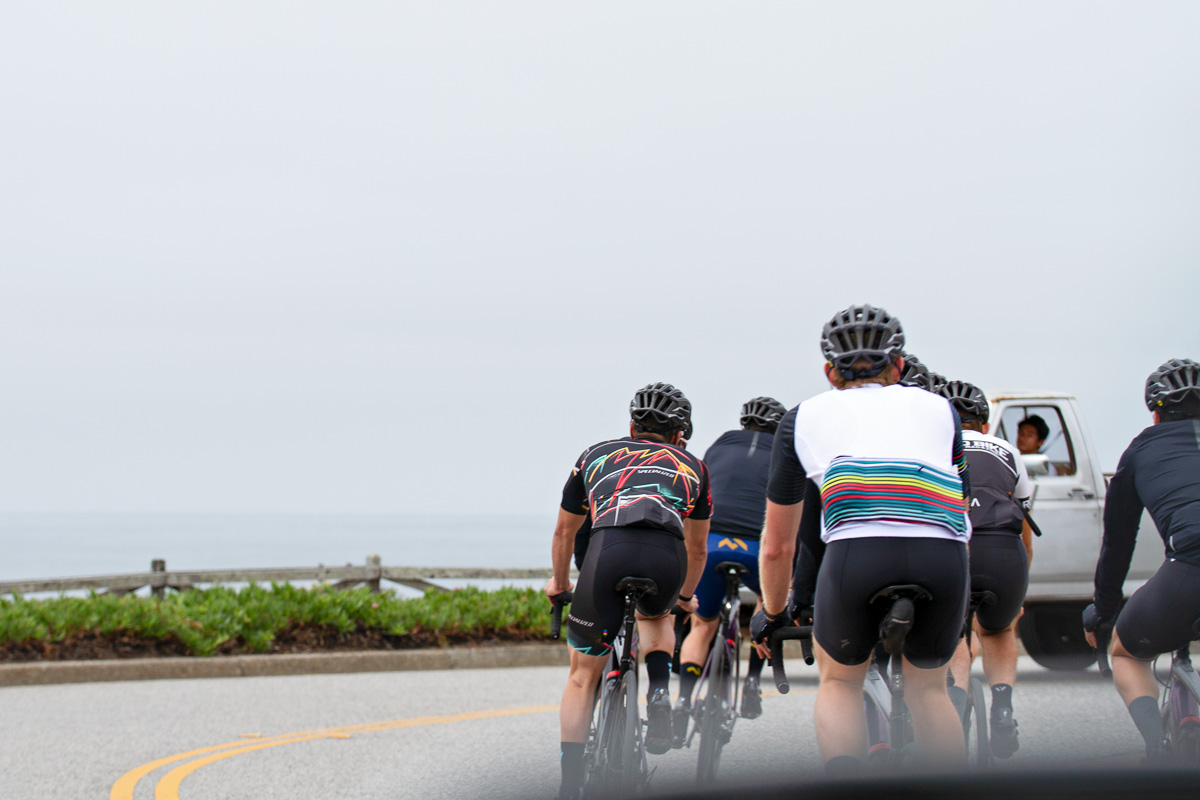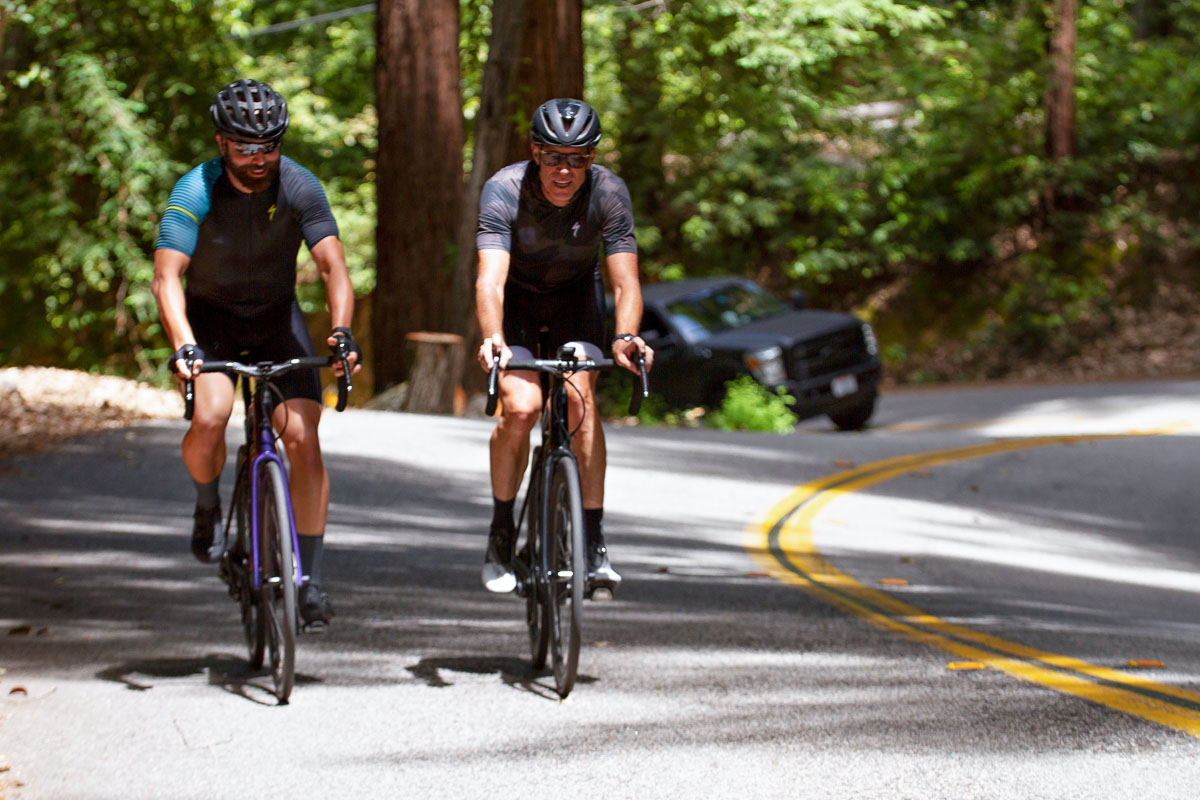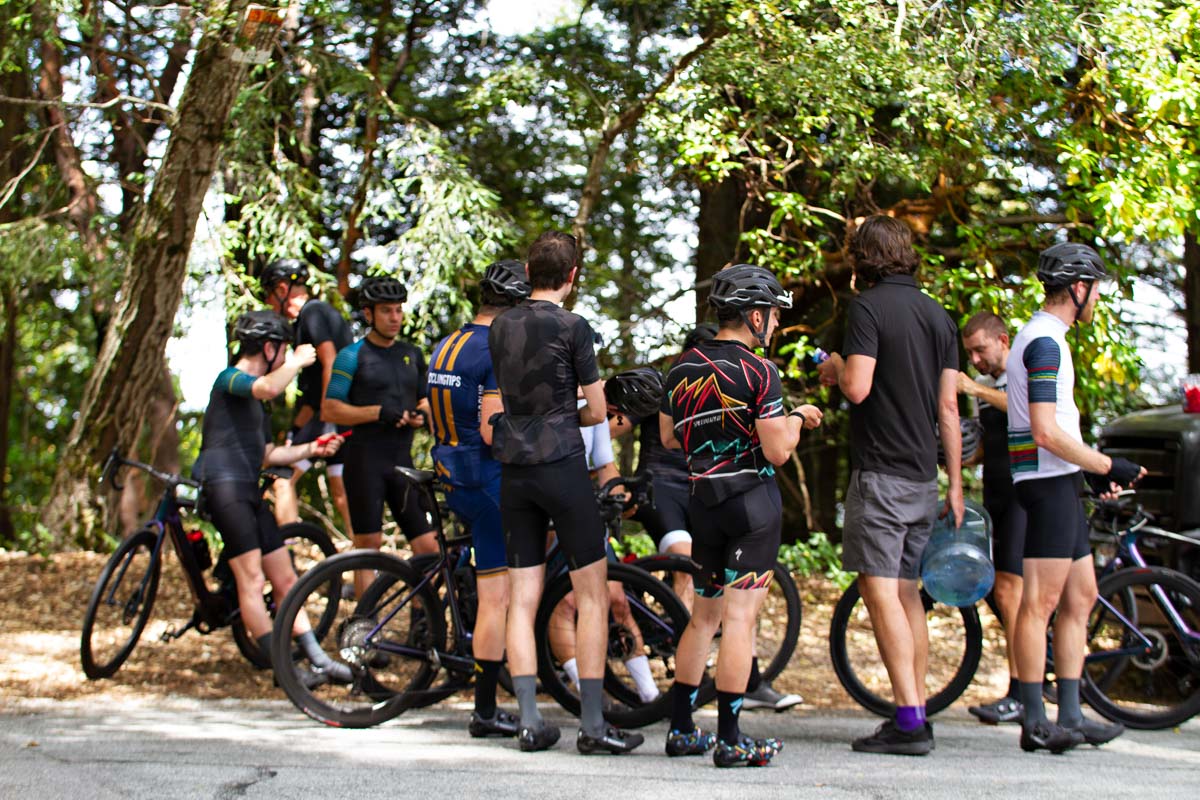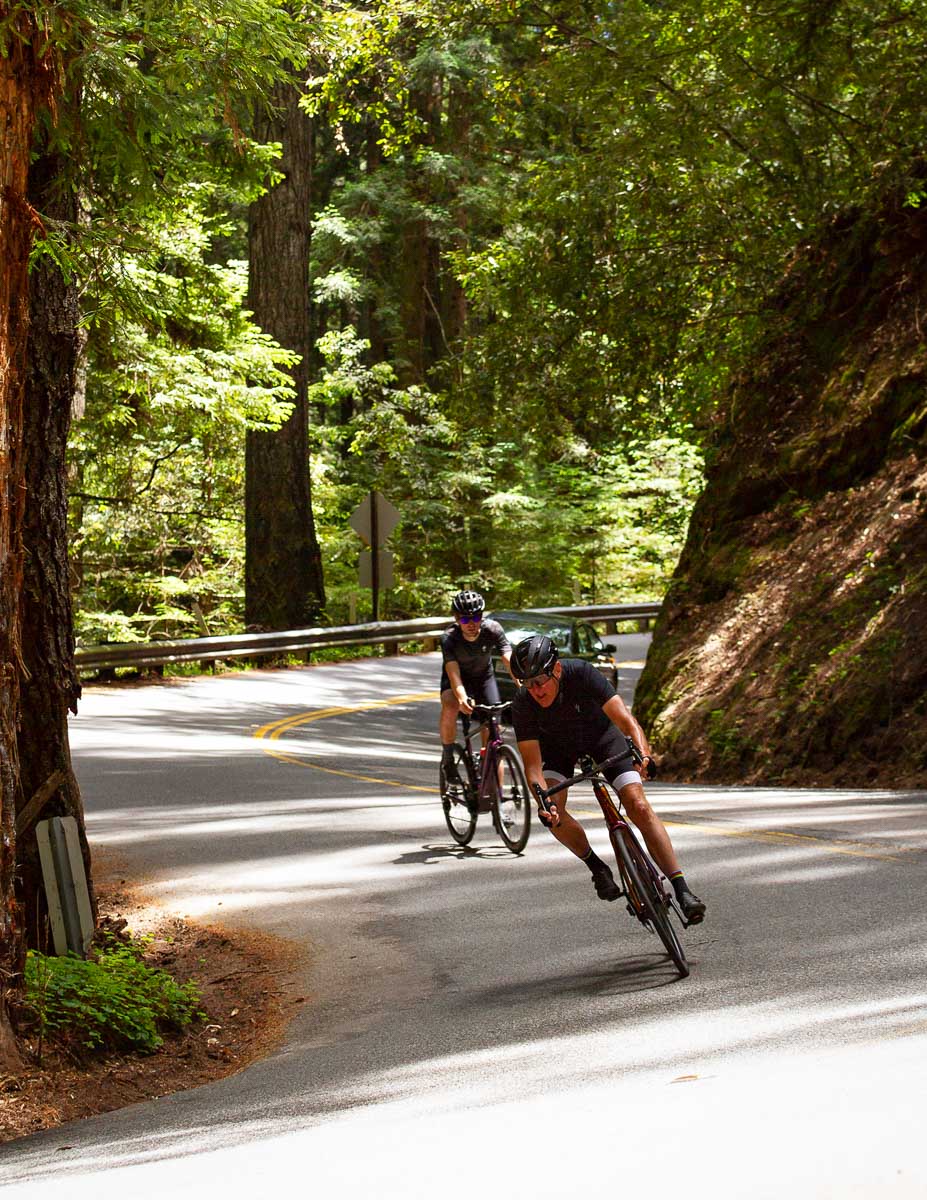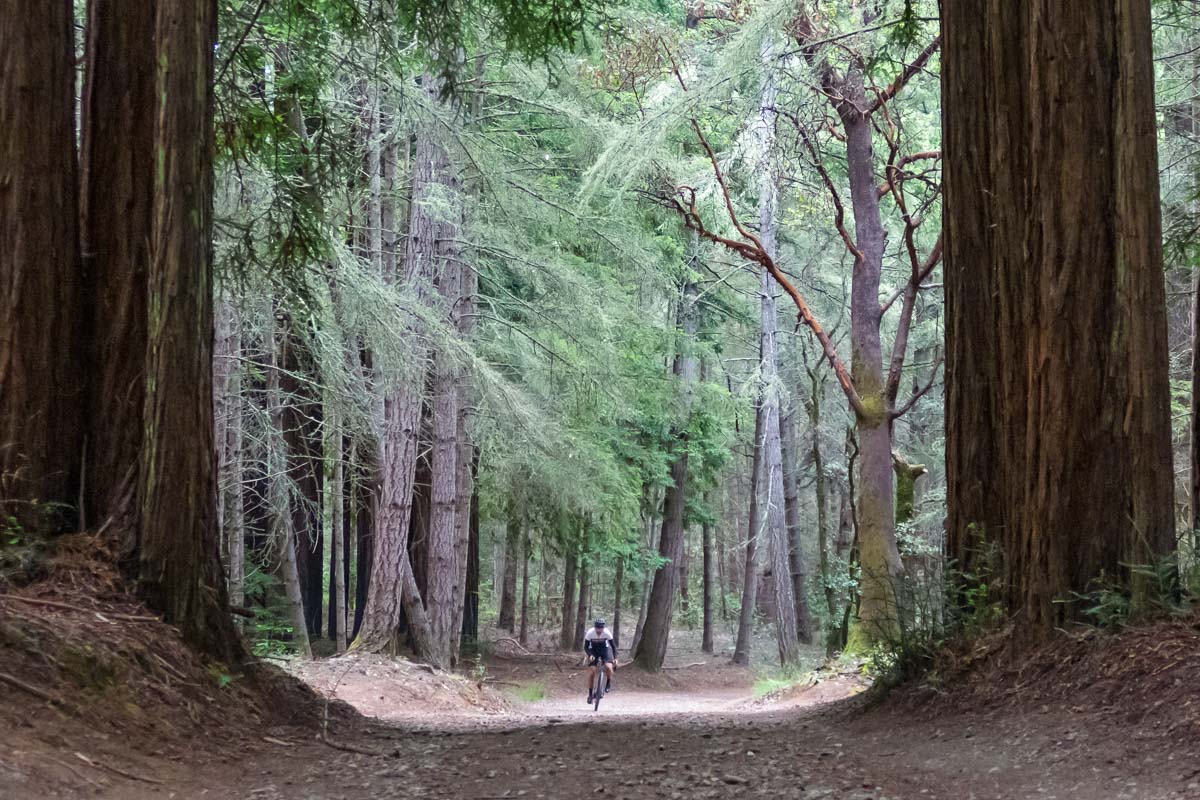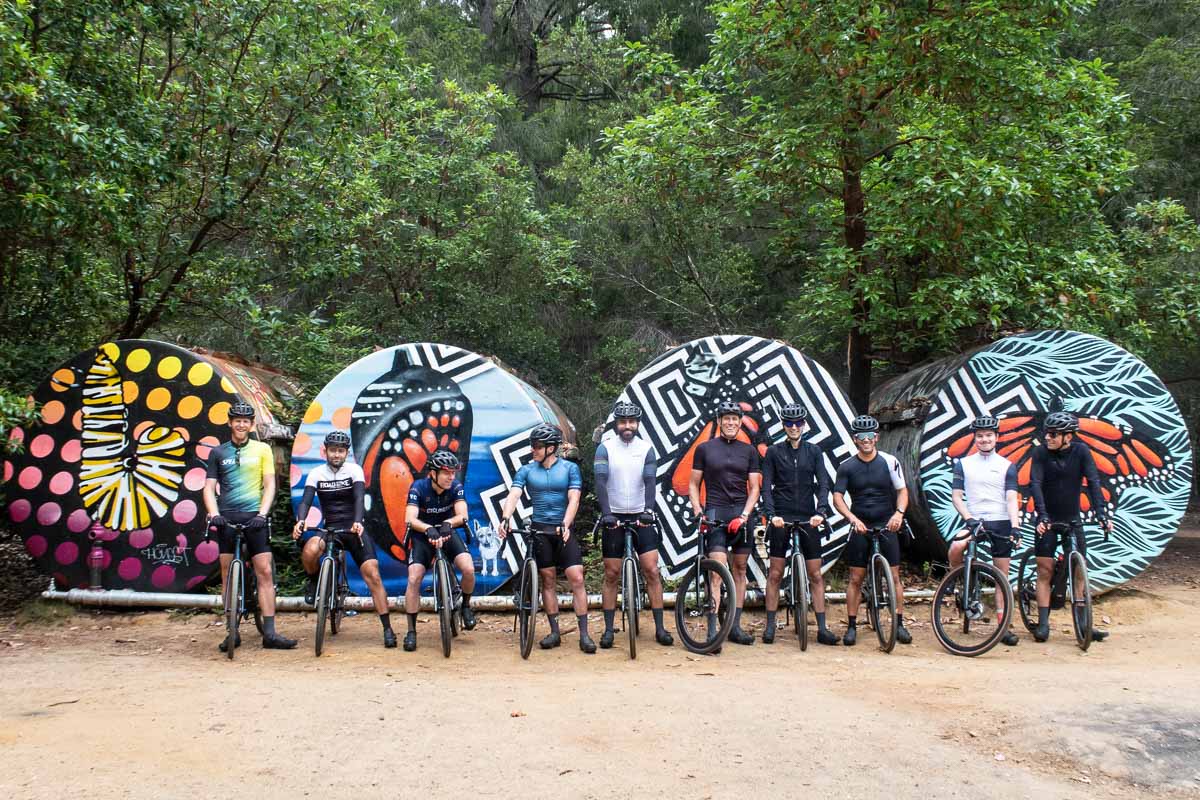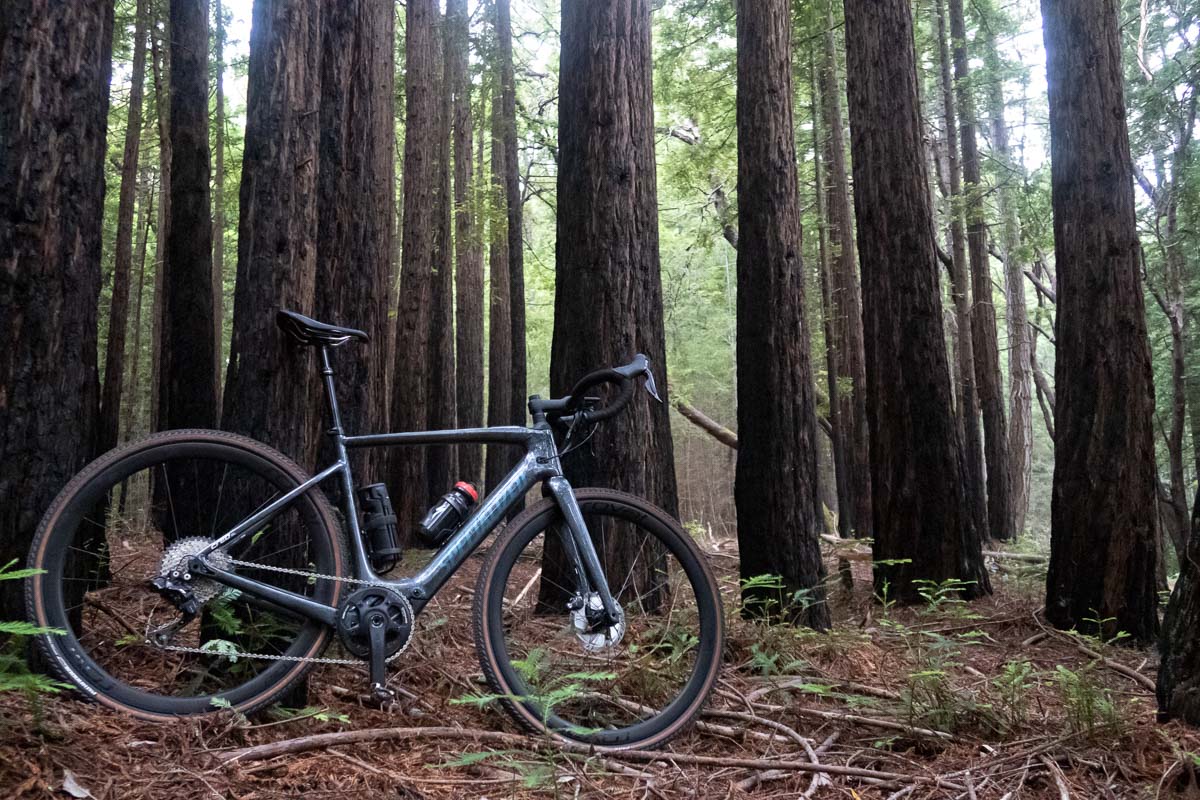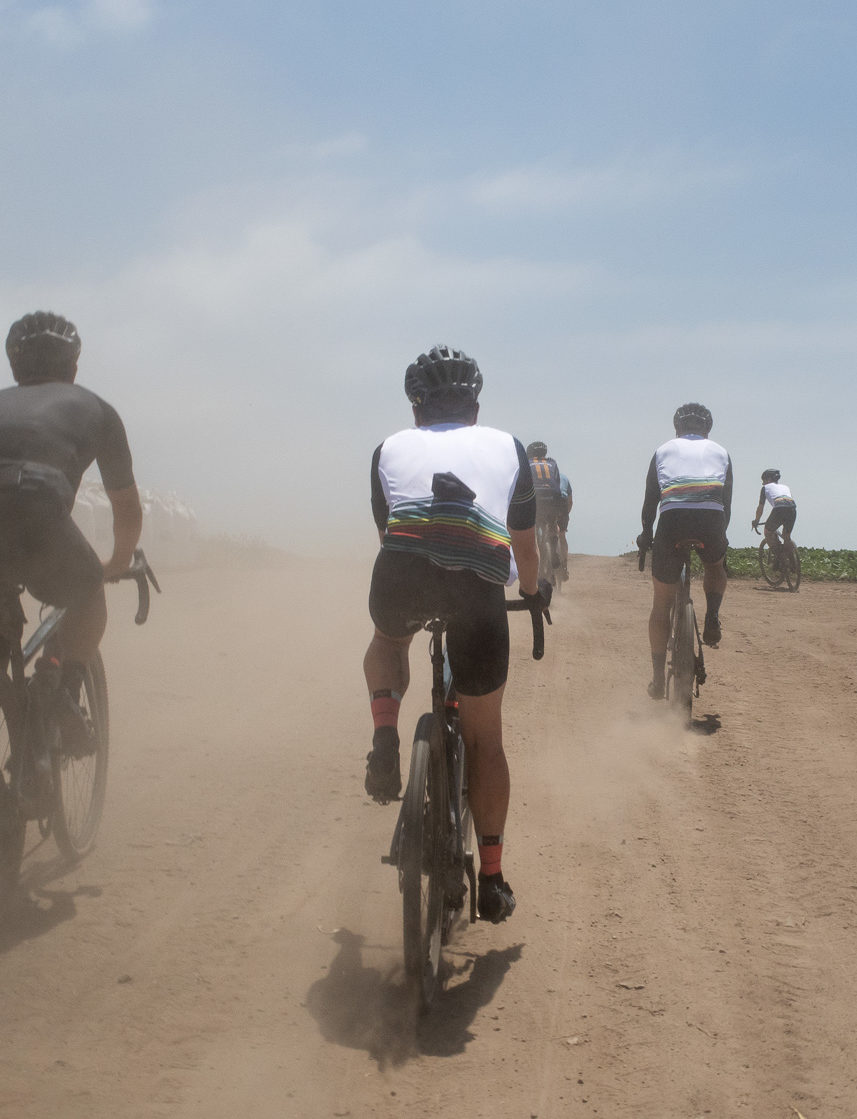Specialized made a huge entry into E-road and E-gravel recently, with the all-new Turbo Creo SL. The tech-packed ride has a lightweight motor with sleek internal battery, along with option Range Extenders and full capability on and off-road. We traveled to Santa Cruz, California to try it for ourselves, for two days of intense riding on a wide variety of terrain.
First Ride Review: Gravel, Road, and more with the Specialized Turbo Creo SL e-bike
E-road and E-gravel are on a rapid rise, with new models popping up all the time. Specialized has been selling e-bikes for commuting and mountain biking, and finally threw their hat into the skinny(ish) tire scene, with the all-new Turbo Creo SL. We did a mega tech breakdown on the new bike already, so check it out for all the details.
Our two days of riding had us aboard two different builds. First up was a ~3 hour hilly road ride on the S-Works Turbo Creo SL, the high-end $14,000 model that’s just shy of the eye-popping Founder’s Edition. Day two had us getting dirty on the gravel-focused Turbo Creo SL Expert EVO.
Hitting The Road
Things started as they normally do – install pedals, check your fit, and get ready to roll. We also downloaded the Mission Control app for full control of the motor system and to record ride data. Note that this is a second app in addition to the Specialized Ride app, which is used in conjunction with ANGi helmet crash sensors. You must start and stop both apps independently if you’re on an E-bike and an ANGi helmet, and Specialized is looking at integrated the two apps in the future to simplify things.
We rolled out on an overcast morning, testing out all of the four motor modes (Off, Eco, Sport, Turbo). The motor isn’t loud but also isn’t completely silent, with a noise level similar to the Bosch and Shimano systems I’ve used this year. Our test bikes were all equipped with the innovative Range Extender battery pack in the seat tube bottle cage, making our display units show 150% battery life at the start of the excursion (riding with the internal battery alone shows 100% at full charge).
We left town, and I started to get a feel for the system and its power curve. As discussed in our tech overview article, Specialized tuned their system specifically for maximum motor efficiency, and to be “in tune with a natural cadence”. In the real world, this means that the motor starts to kick in more as you get moving, so those first few pedal strokes from a stop don’t get much assistance.
We hit the hills around Santa Cruz, and the design for high cadence performance became even more apparent. If you want all of the motor’s output, you simply have to ride with a high cadence. Specialized representatives noted that they’ve had to do some training and re-training of certain shops and customers, teaching them to ride at a higher pedaling RPM.
Overall ride quality and feel of the Turbo Creo are outstanding, with the Future Shock 2.0 really taking the edge off of rough pavement and inspiring confidence, aided by the 28mm S-Works Turbo tires. With a complete bike weight of 26.8 lbs, it doesn’t feel like a boat anchor out of the saddle even with the motor completely off, and Specialized has done great work in keeping the package light.
Once we pointed downhill with some long, winding roads, the handling of the Turbo Creo really started to shine. The low bottom bracket, long wheel base, and low center of gravity make the Creo feel like it’s on rails. The bike holds its line, swoops through corners, and feels absolutely at home on switchback descents.
Heading back into town, we hit a long stretch of highway, and got to test the assistance limit of the motor. Our group rotated in a pace line that flirted with the 28mph limit, officially called “hauling ass” – especially on a windy day. The power cutoff feels perceptible but smooth enough, especially while at high cadence.
Our high speeds also revealed a limitation of the spec, which is top-end gear range. With a 46×11 top gear, I found myself spinning out on more than one occasion, especially heading downhill or trying to close a gap (and not succeeding). This has been a common issue for E-road bikes, which need a 10-tooth small cog or larger chainring, in my opinion.
Hitting The Trail
Day two had us on the Turbo Creo SL Expert EVO – the gravel spec with dropper seat post, flared bars, and 38mm Pathfinder Pro 2Bliss tires. We opted for MTB pedals and shoes, since we got wind that the ride wouldn’t be quite as smooth as the previous day’s road adventure.
This turned out to be true, as our ride quickly left the pavement and went into beautiful forests, with wide double-track trails that seemed perfect for a gravel bike.
We continued deeper into the woods, finding increasingly rough terrain, causing me to let air out of my tires several times (which started the day at about 40psi front, 42psi rear). Similar to the road ride, the Future Shock 2.0 is a welcome addition to the bike, taking the edge off and helping you pay attention to the trail ahead.
Eventually we ended up on full-on singletrack MTB trails. It was here that we reached the limit of the Turbo Creo SL’s abilities. In fact, every local rider we saw from the moment we left the pavement was on a dual suspension mountain bike, who must have been perplexed by the gaggle of journalists rolling in on fat tire road bikes. Rocks, roots, and steep trail edges caused at least a dozen pedal strikes, while my rear tire skidded frequently down steep and loose sections.
I’m sure the Future Shock was doing something, but it felt akin to an 80mm XC fork on a trail that requires twice that travel (or more). It was very reminiscent of my recent test of the BMC URS gravel bike, in which we navigated similar trails, with the bike feeling similarly out-of-place. Also like that ride, we didn’t get enough photos to accurately illustrate to you just how mildly terrifying the terrain was. You’ll have to take my word for it, but a mountain bike was the correct choice (my beat-up hands, arms, and shoulders were sufficient proof for me).
The mountain bike trails also revealed to me that the high-cadence-specific motor can struggle at times off road. It’s not uncommon that you turn a corner on the trail and find yourself facing an immediate uphill sprint – and you’re not in the ideal cassette cog. These low-rpm situations are exactly the time where I want the motor’s help, but you don’t get the full juice until you’re on top of your gear. In contrast, the Shimano E8000 system and the 2020 Bosch motors kick in at a lower RPM, giving a welcome boost in a less-than-perfect situation. It also seemed that the Turbo system wasn’t quite as seamless as those competitors in terms of the quick on-off motor cycles when picking through technical sections.
We hit blinding speeds as we returned to the asphalt, heading down the same descent as the previous day. My chain mysteriously threw off of the chainring as I went from coasting to pedaling, despite the rear derailleur clutch being engaged. My best guess is that it was due to remnants of poison oak and other vines clogging my cassette, after a muddy rut had sent me off-trail during the MTB portion.
We ended up taking some loose and sandy farm roads back towards town, which revealed what I consider to be a near-universal truth with E-gravel bikes: You want more tire than you’re used to. Think of it this way – the extra power afforded by the motor increases your average speed significantly, so you’re taking every turn faster than normal. Our 38mm Pathfinder Pro tires felt great on roads and tighter-packed trail, but they skidded and washed out on dry, sandy trails. A knobby 42mm tire would have a bit more rolling resistance on the road, but when you have the motor’s assistance – who cares? I’ll take the knobs.
The battery life of the Turbo Creo SL impressed me, with the second day ending at 6% battery life (having started at 150% with the dual batteries). It was a 3 hour, 24 minute ride, using the Turbo mode almost exclusively. This perfectly illustrates the design intent, targeting maximum efficiency and distance. In contrast, my ride on the BMC Alpenchallenge AMP Road was less than half the time, but ended up with about 25% battery left (because the Shimano motor puts out twice the torque of the Specialized unit).
At the end of the day, e-bikes are here to stay, and it will take time for manufacturers to learn which style of system people want (i.e. long distance, high power, low RPM, high RPM). The biggest challenge right now is that the products are all over the map, so even if two friends both own e-bikes, they might have completely different capabilities. Consider the Specialized system if you value light weight, clean integration, and long distance over low-mid RPM punch.
